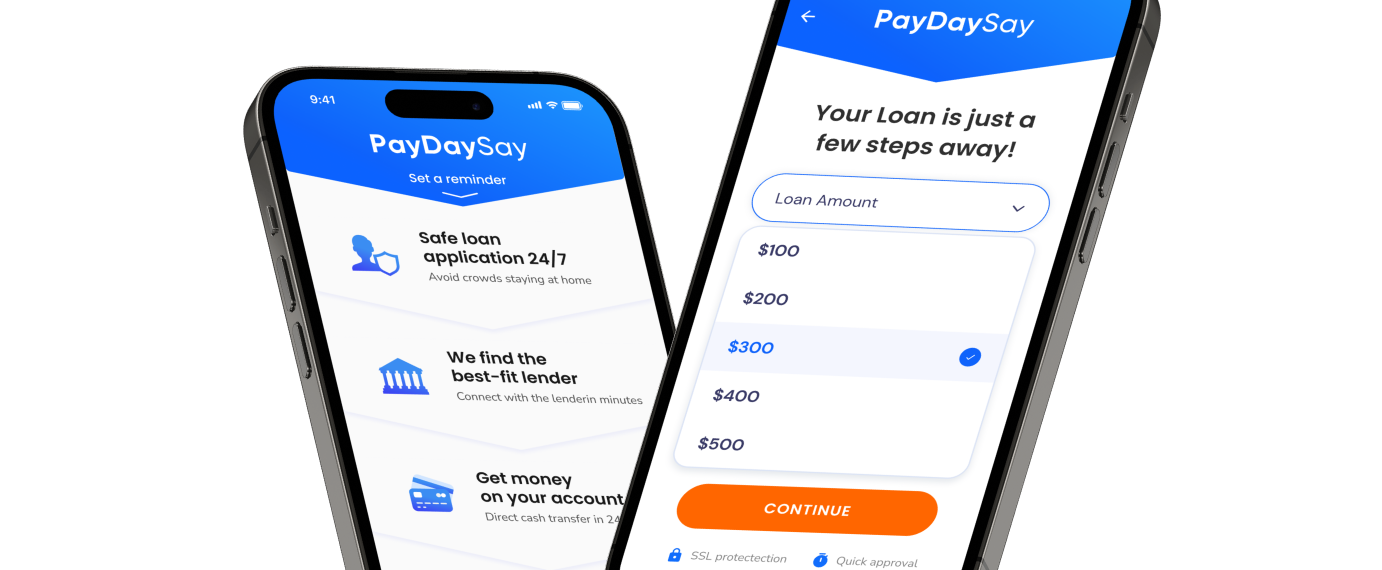In a world where financial literacy is becoming increasingly crucial, especially for the younger generation, the advent of personal finance apps has been a game-changer. Today, we’ll explore the realm of personal finance apps, delving into their significance for teens and young adults.
Understanding the Basics of Personal Finance For Teens
Financial literacy is a vital life skill for teenagers transitioning into adulthood. In today’s complex financial world, equipping young adults with the knowledge and tools to navigate the financial landscape is essential.
The importance of financial literacy cannot be overstated. It empowers teenage adults to make informed financial decisions, setting them on the path to financial security and independence. This article provides comprehensive insights, tips, and strategies, from budgeting and saving to investing and credit management.
We’ll explore creating a budget that works, cultivating saving habits, and setting long-term investments. We’ll also delve into credit management, shedding light on responsible borrowing and the impact of credit scores on finances. This article aims to equip young adults with the financial knowledge needed to thrive by offering useful insights and practical advice.
The Importance of Financial Literacy
Financial literacy enlightens individuals to make informed and responsible financial decisions. It teaches them to manage their finances effectively, ensuring financial well-being and security.
Without this knowledge, teens may struggle with basic financial tasks like budgeting and investing. They might fall victim to risky financial practices, accumulate debt unnecessarily, and miss opportunities for wealth accumulation. In contrast, when equipped with financial literacy, young adults can confidently make informed decisions about saving for emergencies and investing for long-term goals.
Moreover, the definition of financial literacy extends beyond personal wealth; it encompasses understanding economic principles, managing credit responsibly, and being aware of financial products and services. This knowledge benefits individuals and contributes to overall economic stability and prosperity.
Setting Financial Goals
Setting clear financial aims is a fundamental step toward effective money management. Here’s how it contributes to financial well-being:
- Focus and direction: Aim gives a clear sense of purpose, helping individuals stay focused on their financial objectives.
- Motivation: Specific aims serve as motivating factors, encouraging disciplined financial behavior.
- Prioritization: Future plans help prioritize spending and saving, ensuring resources are allocated wisely.
- Measurable progress: Having defined targets allows individuals to track their financial progress and adjust as needed.
- Budgeting tool: Goals are the basis for creating a budget, guiding spending patterns and savings targets.
- Emergency preparedness: Financial aims often include allocating an emergency fund, which is crucial for unexpected expenses.
- Debt management: Targets can include strategies for debt reduction, facilitating a path toward financial freedom.
- Wealth accumulation: Investing targets help grow wealth over time, achieving long-term financial security.
- Retirement planning: Future plans related to retirement savings ensure a comfortable and secure retirement.
Clear financial plans give direction, motivation, and a structured approach to managing money, ultimately leading to the achievement of one’s financial aspirations.
Budgeting Made Simple
This step-by-step guide will help teen adults build a budget that covers expenses, savings, and leisure activities.
- Gather financial data: Collect your financial records, including bank statements, paychecks, and bills, to evaluate your income and expenses.
- Document income: List income sources, such as salary and any other earnings. Use these to calculate your total monthly income.
- Identify important expenses: List the monthly costs of important expenses, such as rent, insurance, and loan payments.
- Determine other expenses: Using previous spending habits, write down flexible expenses like shopping items and transportation.
- Allot savings: Decide what percentage of your monthly income goes to your savings. It could be for emergencies, retirement, or vacation.
- Sum expenses: Add both expense categories with savings allocations to determine your total monthly expenditure.
- Compare income with expenses: Subtract your total expenditure from your monthly salary. What you want is a positive balance. Otherwise, readjust and repeat the procedure.
- Adjust your budget: If your expenses exceed your income, review your budget and cut back. Prioritize needs over wants.
- Monitor your spending: Record your daily expenses to ensure you adhere to your budget. Many free online apps and tools can help with this.
- Review and adapt regularly: Frequently revisit your budget to track your progress, adjust for changes in income or expenses, and set new financial aims if necessary.
Building a Strong Financial Foundation
Saving Wisely
Saving helps you to:
- Break the cycle of living paycheck to paycheck.
- Gain peace of mind and reduce financial stress.
- Build an emergency fund for unexpected expenses.
- Work towards desires like buying a home.
- Have funds to seize opportunities or weather financial setbacks.
When you keep money in banks, you earn a compound interest, which is the interest you earn on your initial savings and its interest. The key benefits include:
- A rapid increase in savings.
- Generates passive income.
- Long-term wealth building.
If you’re interested and want to get started, you can open and manage a savings account by following these steps.
- Choose a bank or credit union with competitive interest rates, low fees, and quick access to branches or ATMs.
- Gather the required documents, such as valid identification.
- Decide whether you want a regular or high-yield savings account.
- Complete the application and fund the account to activate it.
- Sign up for automatic deductions from your current account to your savings account on payday app.
- Regularly review your account statements and track your progress toward savings goals.
- Maximize opportunities to earn more interest by exploring higher-yield savings options or using promotional rates.
Earning Money Responsibly
Below are various ways teen students can earn money responsibly:
- Part-time jobs: Many businesses hire youths for part-time positions, such as retail or food service. These jobs offer valuable work experience and a steady income stream.
- Freelancing: Teens can render their skills online as freelancers. Whether it’s writing, computer design, or content creation, freelancing offers the opportunity to earn income using their skills.
- Babysitting or pet sitting: Providing childcare or pet-sitting services is another way for teens to earn money within their local community.
- Tutoring: If good in a particular subject or topic, teenage students can start tutoring classes for classmates or junior students.
- Odd jobs: Another way to earn money is by mowing lawns, shoveling snow, cleaning houses, or performing other odd jobs in the neighborhood.
- Selling crafts or art: Artistically talented teens can create and sell artwork or handmade jewelry online or at local craft fairs.
- Blogging or YouTube: Building a blog or YouTube channel around a passion or expertise can eventually generate income through advertising and sponsorships.
- Small online business: Starting an online business selling clothing, accessories, or custom merchandise can be profitable.
Teens should approach these opportunities responsibly by adhering to any legal age requirements, considering their academic commitments, and managing money matters wisely.
The Power of Delayed Gratification
Delayed gratification involves resisting immediate rewards to achieve significant, long-term financial goals. This practice cultivates discipline and aligns present actions with future financial aspirations. By forgoing impulsive spending and instead saving and investing, youths can use delayed gratification to accumulate wealth over time.
Furthermore, delayed gratification creates a safety net by establishing an emergency fund. It encourages saving for significant expenses like a car, helping individuals avoid excessive debt. Ultimately, embracing delayed gratification leads to disciplined and informed financial decisions, facilitating a secure financial future.
Building Credit
The table below gives tips on building credit.
| Steps | What you need to do |
| Maintain a consistent employment history. | Building credit starts with having a steady job. Lenders typically look for a consistent employment history as it signifies your ability to repay debts. This may involve securing a job, maintaining it, and showcasing your reliability through paychecks or employment verification. |
| Get a cosigner for a credit card. | If it’s your first request, having a cosigner can help you access credit cards with better terms. A cosigner with good credit vouches for your financial responsibility, making lenders more comfortable granting you credit. Note that you and your cosigner share equal responsibility for the card’s debt, and their credit could be affected if you miss payments. |
| Try for a student credit card. | Student credit cards often have lower credit limits and fees. When applying, ensure you meet the eligibility criteria, like learning in an accredited educational institution. Responsible student credit card use can help you build a positive credit history. |
Navigating the World of Banking Resources For Personal Finance
Introduction to Banking
Teenage adults have access to various bank accounts and financial services tailored to their needs. Common options include:
- Savings accounts: These accounts encourage savings by giving interest on deposited funds. They typically have low or no fees and can be a great way for teens to start building savings.
- Current accounts: Useful for everyday transactions like paying bills and making purchases. They often come with a debit card for easy access to funds.
- Student accounts: Specifically designed for students, these accounts may have lower fees or minimum fund requirements.
- Custodial accounts: These accounts are opened by a parent or guardian on behalf of a minor. Parents handle the account until the child reaches a certain age.
- Prepaid debit cards: These cards are funded with a fixed amount of money, allowing teens to spend only what’s available. They are a subtle way to introduce budgeting and responsible spending.
Managing Your Current Account
Financial responsibility involves effectively managing your current account. The following pointers will guide you.
- Monitor transactions regularly: Keep track of every transaction, including deposits, withdrawals, and debit card purchases. Use a checkbook register, a notepad, or a budgeting app to record these transactions.
- Balance your account: Do this by comparing your recorded transactions with the bank statement. Ensure that your records match the bank’s records to identify discrepancies and prevent overdrafts.
- Utilize mobile banking apps: Download your bank’s mobile app for convenient account management on the go. Most apps offer features like mobile check deposit, which allows you to deposit checks by taking photos.
- Use budgeting tools: Many online banking platforms offer budgeting tools to categorize and analyze your spending. These tools help you understand your financial habits and make informed decisions.
- Protect your account: Safeguard your account information, including passwords. Regularly update them and be cautious of phishing attempts or suspicious emails.
- Set up overdraft protection: Consider setting up overdraft protection to avoid costly overdraft fees. Link your current account to a savings account or a line of credit to cover overdrafts.
All About Debit and Credit Cards
This table describes the major differences between debit and credit cards.
| Criteria | Debit Card | Credit Card |
| Function | Linked directly to your current account. | Provides a line of credit for borrowing. |
| Spending Limit | Limited to the available account funds. | Has a preset credit limit that’s fixed by the issuer. |
| Interest Charges | No interest charges since you use your money. | Incurs interest if you carry money beyond the grace period. |
| Payment | Payments are made using account funds. | Requires monthly payments to the credit card issuer. |
| Credit Score Impact | Typically has no direct impact on credit score. | Usage and payment behavior affect credit score. |
| Overdrafts | May result in overdraft fees if you spend more than your account funds. | Doesn’t lead to overdrafts but may result in late fees and interest charges if not paid on time. |
| Debt Risk | Low risk of accumulating debt since spending is limited to available funds. | Potential risk of accumulating debt if you carry a balance. |
Regardless, you can avoid debt by:
- Creating a monthly budget and sticking to it.
- Setting aside an emergency fund, reducing the reliance on credit.
- If you use a credit card, pay the full statement amount by the due date to avoid interest charges or debt repayment extension.
- Opening multiple credit cards can lead to overspending. Apply for credit only when necessary.
Making Smart Financial Decisions
Responsible Spending
Mindful spending involves making conscious choices about how you allocate your resources. These strategies are helpful:
- Creating a budget: Draft a detailed budget that outlines your income and all monthly expenses, and stick to it.
- Prioritizing needs vs. wants: Distinguish between needs (housing, utilities, groceries) and wants (dining out, movies) in a tabular format. Prioritize needs in your budget.
- Practice delayed gratification: Before making a purchase, especially for non-essential items, think it over again. Delaying immediate gratification can help you make more deliberate spending choices.
- Shop with a list: Write a list to take with you while shopping. Avoid impulsive purchases by planning your shopping trips in advance.
- Comparison shopping: Before making a significant purchase, research prices and options to ensure you’re getting the best value.
- Avoid emotional spending: Be aware of emotional triggers that may lead to impulsive spending, such as stress, boredom, or social pressure. Find alternative ways to address these emotions.
- Reevaluate subscriptions: Regularly review and cancel unused or unnecessary subscriptions and services to free up funds for more meaningful expenses.
Avoiding Debt Traps
High-interest debt, usually associated with credit cards and payday loans, poses significant dangers to one’s financial well-being. When you carry high-interest debt, a huge portion of your monthly payments goes toward settling interest rather than reducing the principal debt. Therefore, your debt repayment progresses slowly, causing financial stress.
Another negative effect of high-interest debt is its damage to your credit score. Late payments or high credit card amounts can negatively impact your creditworthiness, making it difficult to secure loans or obtain favorable interest rates.
To manage or avoid high-interest debt, several strategies can be employed. Budgeting is vital to track income and expenses and allocate funds for debt repayment. Prioritizing high-interest debt for repayment, exploring consolidation options, like consolidating payday loans, and paying credit card due amounts in full each month can help mitigate potential dangers. Additionally, seeking professional guidance when debt becomes overwhelming can be a valuable step toward financial recovery and stability.
Understanding Investments
Introducing basic investment concepts to teens can help them learn to build a strong financial portfolio. Here’s an overview of key investment ideas:
- Stocks:
- When you purchase a stock, you own a share of that company.
- Stock prices can rise or fall based on company performance, market conditions, and economic factors.
- Investing in stocks can offer the potential for long-term growth but also comes with higher risk.
- Bonds:
- Bonds are essentially loans that you give to governments or corporations. In return, they pay you periodic interest and return the bond’s face value when it matures.
- Bonds are less risky and are often used to provide a stable source of income.
- Mutual Funds:
- This is a money pool from several investors to invest in stocks, bonds, or other assets.
- They offer diversification, reducing risk by spreading investments across various assets.
- Mutual funds are managed by professionals, making them a convenient option for those who want a hands-off approach to investing.
It’s important for youths to learn the significance of diversification. They can start with small investments and gradually build their investment portfolio.
Planning for the Future
The Importance of Emergency Funds
The importance of an emergency fund lies in its ability to provide financial security during unexpected circumstances. When unplanned expenses arise, having an emergency fund ensures that you have readily accessible funds to cover these costs, preventing the need to resort to debt.
To establish an emergency fund, teens can follow a systematic approach. Start by setting a clear savings goal, typically aiming for 3-6 months’ average cost of living expenses. Open a separate account for savings dedicated to the emergency fund to prevent the temptation to dip into the fund for non-emergencies.
Automating contributions is another effective method. Set up automatic transfers from your current account to your emergency fund account on payday. Even small, regular contributions can accumulate over time. Additionally, review your budget to identify areas where you can cut back on non-essential spending, redirecting the extra money into your emergency fund.
By treating the fund as a priority, youths can ensure its steady growth over time. It’s important to emphasize that the emergency fund should be reserved exclusively for genuine emergency scenarios.
Planning for Higher Education
Funding higher education can be complicated due to high tuition costs, but there are various options available. Scholarships and grants are excellent choices, as they don’t require repayment. They’re awarded based on academic achievement, strong reference letters, or financial need. Students should actively seek out scholarship opportunities and apply for as many as possible.
Student loans are reliable alternatives but don’t use this option if you’re not certain you can pay back. While they provide immediate financial aid, they come with the obligation of repayment, often with interest. It’s crucial to research loan terms, explore federal options with favorable interest rates, and only borrow what’s necessary to avoid excessive debt after graduation.
Starting Your Retirement Fund Early
Starting a retirement fund during the teenage years demonstrates financial responsibility and can be beneficial. The most significant merit is maximizing the power of compound interest. Compound interest means that your money earns interest not just on your initial savings but also on the interest it accumulates over time. When you start saving early, even small amounts have decades to develop exponentially. This results in substantial wealth accumulation by the time you reach retirement age.
Early retirement saving allows you to take full advantage of compound interest, potentially requiring smaller monthly contributions to achieve your retirement plans. In essence, the sooner you start, the more your money can work for you, securing a financially comfortable retirement.
Conclusion
In conclusion, building a strong personal financial background is important for teen adults as they embark on their financial journeys. It’s not just about understanding budgeting, saving, or investing, but other aspects like forging a habit of financial responsibility and foresight.
As based on our findings, financial literacy, budgeting to manage income and expenses, building an emergency fund to mitigate unforeseen bills, early investments, and responsible borrowing are critical for teens. These topics not only help teenagers navigate their current financial landscape but also pave the way for a secure and prosperous future.
Perhaps the most powerful lesson is the appreciation of time in financial planning. Starting early with responsible financial practices, such as retirement savings and taking full advantage of compound interest. By adhering to these principles, teenagers can confidently work towards financial independence and ensure a solid financial foundation for the future.













 on your homescreen
on your homescreen
